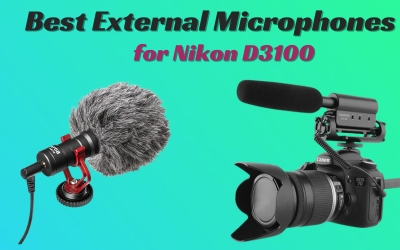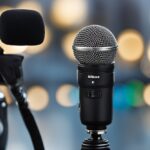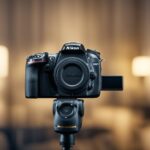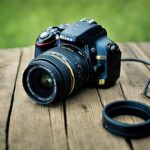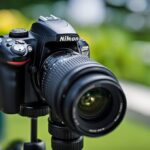Are you tired of poor audio quality ruining your Nikon D5100 videos? Adding an external microphone can make a world of difference. Not only can it enhance the overall sound quality, but it can also provide directional audio and reduce unwanted background noise. In this article, we will explore how an external microphone can enhance audio on your Nikon D5100 and provide practical tips for achieving the best results.
Whether you’re a professional videographer or a casual user, adding an external microphone to your Nikon D5100 can help you achieve better audio quality. But with so many types of external microphones available, it can be challenging to choose the right one for your needs. We’ll cover the different types of external microphones that are compatible with the Nikon D5100 and help you determine which one is best for your specific situation.
In this article, we’ll also provide step-by-step instructions for connecting and configuring your external microphone to your Nikon D5100. Additionally, we’ll give you practical tips for achieving the best audio quality, such as using wind protection and adjusting your microphone levels. With our help, you’ll be able to achieve professional-grade audio on your Nikon D5100 videos.
Table of Contents
ToggleHow does an external microphone enhance audio on Nikon D5100
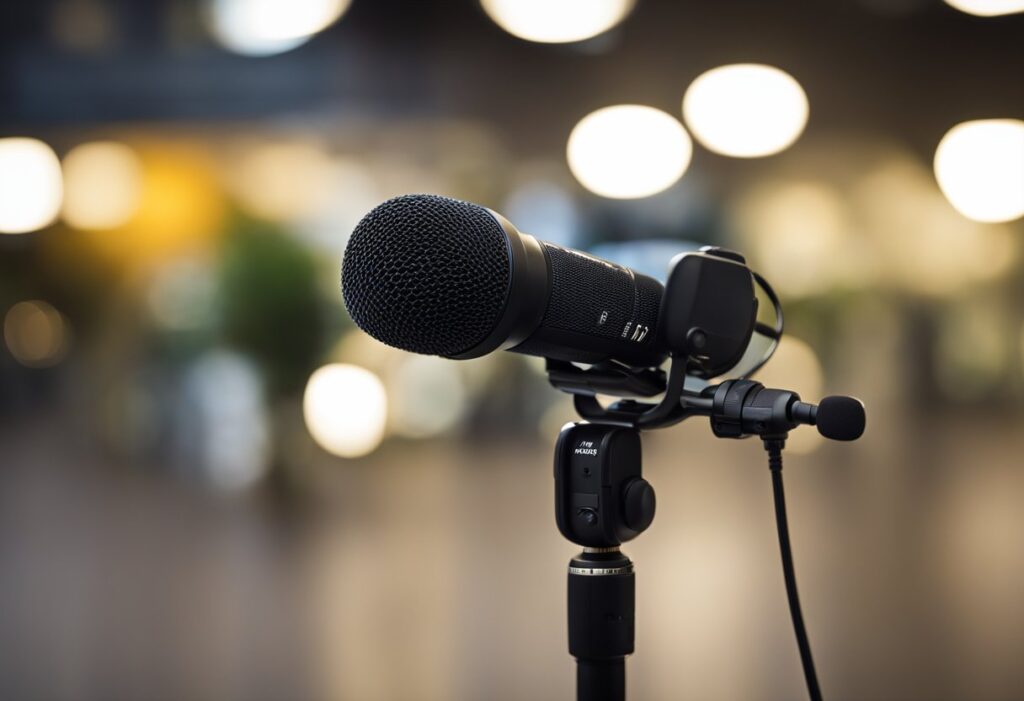
If you are looking to improve the audio quality of your Nikon D5100, an external microphone is an excellent investment. Here are some ways how an external microphone can enhance the audio quality of your Nikon D5100:
Improved Sound Quality
The built-in microphone of the Nikon D5100 records audio in mono, which can result in a flat and uninteresting sound. An external microphone can capture a wider frequency range and produce a more dynamic and natural sound. With an external microphone, you can capture the subtle nuances of the sound, resulting in a more polished and professional-sounding audio.
Directional Audio Capture
External microphones come in different types, including directional microphones that capture sound from a specific direction. This is especially useful when recording in noisy environments or when you want to focus on a particular sound source. Directional microphones can help you capture sound with greater clarity and reduce background noise.
Noise Reduction Capabilities
Some external microphones come with noise reduction capabilities that can help eliminate unwanted background noise. This can be especially useful when recording in noisy environments or when you want to capture sound in a quiet setting. Noise reduction can help you achieve a cleaner and clearer sound.
Enhanced Audio Control
An external microphone gives you more control over the audio recording process. You can adjust the microphone’s sensitivity, volume, and other settings to get the desired sound quality. This level of control can help you achieve a more professional-sounding audio and make your recordings stand out.
Related Posts:
Types of External Microphones for Nikon D5100
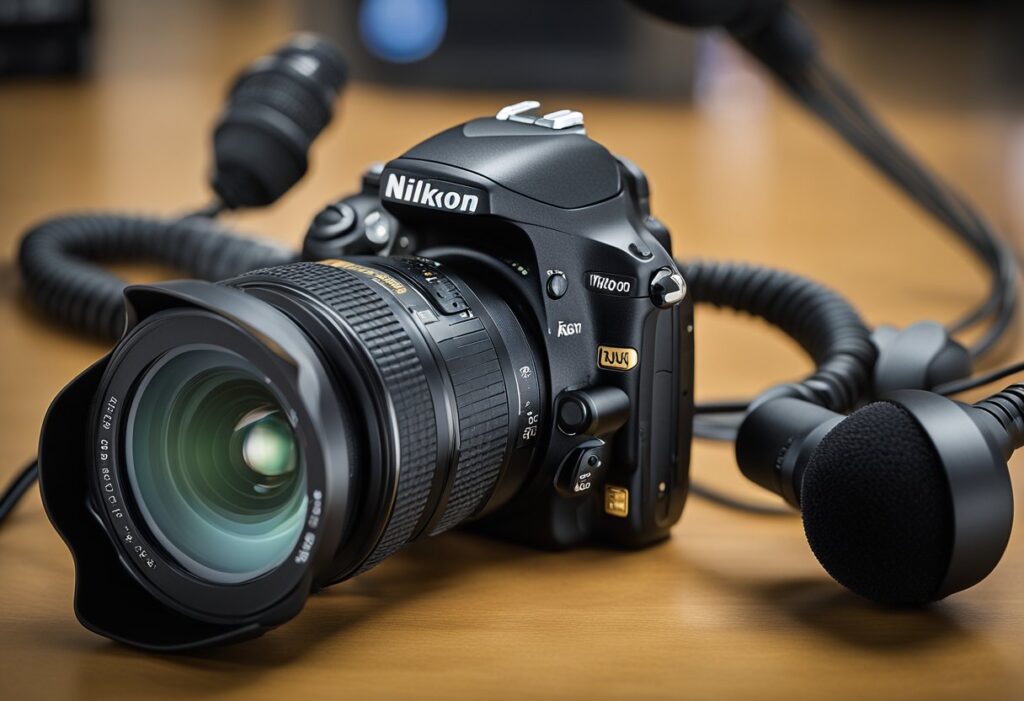
If you want to enhance the audio quality of your Nikon D5100, you need to invest in an external microphone. Here are the three most common types of external microphones for Nikon D5100:
Shotgun Microphones
Shotgun microphones are directional microphones that are designed to capture sound from a specific direction. They are ideal for recording interviews, speeches, and other types of content where the speaker is in front of the camera. Shotgun microphones are also great for capturing ambient sound and background noise.
One of the best shotgun microphones for Nikon D5100 is the Rode VideoMic Pro+. It is a top-tier shotgun microphone that is designed to elevate the audio quality of your recordings to professional heights. It has a sturdy construction, indicative of Rode’s commitment to durability and quality.
Lavalier Microphones
Lavalier microphones are small, clip-on microphones that are designed to be attached to the clothing of the person speaking. They are ideal for recording interviews, speeches, and other types of content where the speaker is moving around. Lavalier microphones are also great for recording podcasts and other types of audio content.
One of the best lavalier microphones for Nikon D5100 is the Rode SmartLav+. It is a high-quality microphone that is designed to be used with smartphones, tablets, and other mobile devices. It has a small, discreet design that makes it perfect for recording interviews and other types of content where the speaker is moving around.
Condenser Microphones
Condenser microphones are high-quality microphones that are designed to capture sound with great accuracy and detail. They are ideal for recording music, podcasts, and other types of audio content where high-quality sound is essential. Condenser microphones are also great for recording sound effects and other types of ambient sound.
One of the best condenser microphones for Nikon D5100 is the Audio-Technica AT4053b. It is a high-quality microphone that is designed to capture sound with great accuracy and detail. It has a rugged construction that makes it perfect for recording in the field.
Related Posts:
How to Connect and Configure
If you want to enhance the audio quality of your Nikon D5100, using an external microphone is the way to go. Here’s how to connect and configure an external microphone on your Nikon D5100.
Connecting to the Nikon D5100
The first step is to connect the external microphone to your Nikon D5100. The camera has a 3.5mm jack for an external microphone, so you need to make sure that your microphone has a compatible jack. Once you have the right microphone, plug it into the jack on the side of the camera.
Setting Audio Levels
After you have connected your external microphone, you need to set the audio levels. This will ensure that the audio you record is not too soft or too loud. To set the audio levels, go to the camera’s menu and select the “Audio Recording” option. From there, you can adjust the audio levels using the on-screen meter.
Optimal Recording Settings
To get the best audio quality possible, you should use the following recording settings on your Nikon D5100:
- Use a high-quality external microphone
- Set the audio levels to the highest possible level without clipping
- Use manual focus to avoid autofocus noise
- Use a windscreen to reduce wind noise
By following these tips, you can get professional-grade audio recordings with your Nikon D5100.
Related Posts:
Practical Tips for Best Audio Quality
When using an external microphone with your Nikon D5100, there are a few practical tips you can follow to ensure the best audio quality possible.
1. Choose the Right Microphone
Choosing the right microphone for your needs is crucial. Shotgun microphones are a popular choice for video production, as they allow you to capture directional audio and minimize background noise. The Rode VideoMic Pro+ is a top-tier shotgun microphone that is uniquely crafted for cameras like the Nikon D5100. It is designed to elevate the audio quality of your recordings to professional heights.
2. Use a Windscreen
Wind noise can be a major problem when recording outdoors. To minimize this noise, it is recommended to use a windscreen. A windscreen is a foam cover that fits over your microphone and helps to reduce wind noise.
3. Adjust Microphone Sensitivity
You can adjust the sensitivity of your microphone to ensure that it is picking up the right amount of sound. The Nikon D5100 allows you to turn the built-in or external microphones on or off and adjust microphone sensitivity by holding the button and rotating a command dial. Choose a setting between 1 and 20. The higher the value, the higher the sensitivity; the lower the value, the lower the sensitivity.
4. Monitor Audio Levels
It is important to monitor your audio levels while recording. The Nikon D5100 has a built-in audio level meter that allows you to monitor the sound levels in real-time. You can adjust the levels to ensure that your audio is not too loud or too soft.
Related Posts:
Conclusion
In conclusion, using an external microphone with your Nikon D5100 can dramatically improve the quality of your audio recordings. By choosing the right microphone that fits your needs, you can achieve professional-sounding audio that matches the quality of your video.
Some of the best external microphones for the Nikon D5100 include the Rode VideoMicro, which is compact and affordable, and the Sennheiser MKE 400, which offers high-quality directional audio. Both microphones can be easily attached to your camera and provide improved sound quality compared to the built-in microphone.
Remember to also consider factors such as durability, versatility, and ease of use when selecting an external microphone for your Nikon D5100. With the right microphone, you can take your audio recording to the next level and enhance the overall quality of your video content.
Frequently Asked Questions
What are the steps to connect an external microphone to a Nikon D5100?
Connecting an external microphone to a Nikon D5100 is a straightforward process. First, locate the microphone jack on the camera body, which is located on the left side near the top. Then, plug the microphone into the jack. Once the microphone is connected, turn on the camera and adjust the audio settings as needed.
Can you use an external microphone with the Nikon D5100 if it doesn’t have a mic jack?
No, the Nikon D5100 does not support external microphones that do not have a mic jack. However, there are third-party adapters available that can convert other types of microphones to be compatible with the Nikon D5100.
How do I configure the Nikon D5100 settings for optimal use with an external microphone?
To configure the Nikon D5100 settings for optimal use with an external microphone, start by adjusting the audio recording levels. You can do this by going to the camera’s menu and selecting the “Sound Recording” option. From there, you can adjust the microphone sensitivity and recording levels. Additionally, you may want to consider using a windscreen or shock mount to minimize unwanted noise.
What types of external microphones are compatible with the Nikon D5100?
The Nikon D5100 is compatible with a wide range of external microphones, including shotgun, lavalier, and handheld microphones. When choosing a microphone, it’s important to consider factors such as the type of recording you’ll be doing, the environment you’ll be recording in, and your budget.
Why might a videographer choose to use an external microphone over the Nikon D5100’s built-in mic?
Videographers may choose to use an external microphone over the Nikon D5100’s built-in mic for several reasons. External microphones generally offer better sound quality, more directional control, and reduced background noise. Additionally, some external microphones are designed to be used in specific environments, such as outdoor or indoor settings.
What are the audio quality improvements when using an external microphone with the Nikon D5100?
Using an external microphone with the Nikon D5100 can lead to significant improvements in audio quality. External microphones are designed to capture sound more accurately and with less background noise than the camera’s built-in mic. Additionally, some external microphones offer directional control, allowing you to focus on specific sounds or voices. Overall, using an external microphone can help you achieve professional-quality audio recordings with your Nikon D5100.

